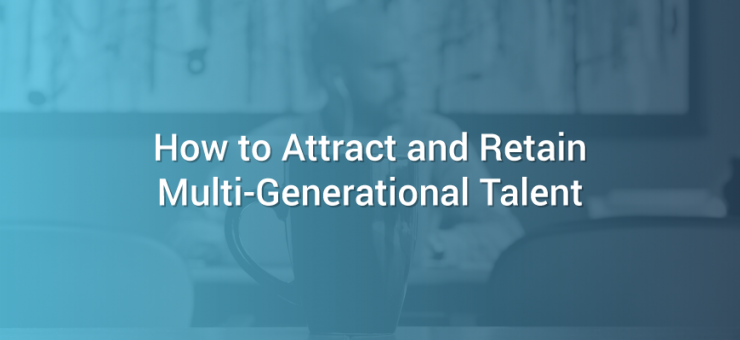More than a decade after the economic crisis of 2008, the global economy is booming. A historically low unemployment rate in the U.S. (around 3.7 percent in July) coupled with a strong economy means that it´s currently an employee´s market. Recent studies show that seven out of every ten employees are actively looking for a new job. Opportunities for an improved salary or prospects to climb the corporate ladder will obviously entice top employee talent to search for new job opportunities that will allow them to advance their careers. However, better workplace environments and healthier company cultures also lure employees away from their current jobs.
High employee turnover is frustrating for any business. The cost of recruiting, hiring, and onboarding new employees is obviously expensive. One report found a business with 500 employees and an average annual salary of $65,000 that loses 90 employees per year to turnover will spend over $3,000,000 in employee turnover costs and lost productivity. Furthermore, losing your best employees to your competitors is certainly not a long-term strategy for staying competitive in the market. Companies that aren’t able to retain their best employees will also often be forced into hiring only younger generations of workers who are new to the job market.
A multi-generational workplace is one that incorporates employees from up to five different generations: Traditionalists, Baby Boomers, Generation X, Generation Y (or Millennials), and the youngest workers from Generation Z. This type of workplace environment allows companies to benefit from the wide variety of talents and life experiences that create a workforce with differing but complementary sets of aptitudes and capabilities.
What Different Generations of Workers Bring to the Workplace
In today´s youth-centric culture, many businesses prioritize the tech-savvy, computer-oriented skills that are associated with younger generations of workers. The digitalization of the workplace certainly offers competitive advantages for companies across a wide range of industries. However, it would be foolish to deny that older generations bring a completely different set of skills and a work ethic that also contributes to healthy and productive company culture. Below, we briefly look at some of the complementary skills, values, and aptitudes that different generations of workers can offer a company.
- Traditionalists (1925–1946): While most workers from this generation are retired (or close to retirement), having an employee from the Traditionalist generation on your team will show younger workers the values of practicality, loyalty, and hard work that characterizes these elder workers. Obviously, a Traditionalist will also have years of practical experience that can be invaluable to a company.
- Baby Boomers (1946–1964): This generation of workers are focused, competitive, and extremely goal-oriented. Having Baby Boomer workers on your team will help your team stay focused on the task at hand and dedicated to meeting certain work goals and ambitions.
- Generation X (1964–1981): Generation Xers are usually characterized as self-reliant and pragmatic. This group of workers will generally require less oversight and will be able to get jobs done in a timely manner without excessive input and time requirements from the managerial team.
- Millennials (1982–1995): Millennials came into adulthood at the beginning of the Internet age and will offer leading tech skills. Due to the drastic changes in the workplace that they have seen and experienced, this generation of workers is also extremely flexible and well-educated. While they inherited the ethic of hard work from their parents, they also are generally open to diversity and inclusion in the workplace.
- Generation Z (after 1995): This youngest generation of workers are extremely tech-savvy. They grew up in the Internet age and will be able to give your company the competitive advantage that comes with a tech-friendly workplace and workforce. Furthermore, these employees are generally entrepreneurial minded, meaning that they will be appreciative of opportunities to innovate within their job.
Strategies to Attract and Retain a multi-generational Employee Talent
Obviously, each generation of workers brings different talents, but also requires different elements from a workplace. Below, we offer several different ideas, strategies, and policy approaches to attract, construct, and retain a highly productive, complementary, and multi-generational workforce.
Flexible Benefits
One thing employees from all generations prioritize when searching for a job is the type of benefits offered. However, it is important to understand that different generations will prioritize and require different benefit offerings. For example, Millennials and Gen Zers are probably straddled with debt from student loans. One study finds that student debt makes up close to 69 percent of the debt for the 25- to 30-year-old American. Generation Xers, on the other hand, probably have families and are more interested in life insurance policies while older generations of workers are looking at advanced healthcare and good retirement options. Offering customizable benefit plans is a great way to attract different generations of workers.
Offer Training and Development to Employees
Around 93 percent of employees claim that they would stick with a certain company if the company committed to investing in their careers. The digitalization of our economy certainly brings new opportunities for companies, but it also requires constant development of new skills and aptitudes. Instead of “reinvesting” in ever-younger generations of workers who were trained in the newest skills demanded by our tech-oriented economy, create training programs for your existing employees from all generations to retain multi-generational talent. Perhaps even more importantly, companies that offer comprehensive and consistent training programs claim over 200 percent higher income per employee than companies that do not offer formalized training.
Pairing Different Generations of Employees
It wouldn’t make much sense to hire diverse generations of employees and then pigeonhole them into different corners of your company. One of the biggest advantages of a multi-generational workforce is that their skillsets can supplement and complement one another to increase productivity and create top-level deliverables. Pairing employees from different generations for team projects not only allows your company to benefit, but also allows employees to learn from one another.
Hiring and managing a multi-generational workforce can certainly be a challenge, though there are inspiring examples of companies that have successfully incorporated workers from three or more generations. Amazon Logistics, to name just one example, routinely makes an effort to hire different aged people for their warehouse management and logistics operations. The $15-an-hour pay is attractive to both people who are new to the workforce, and people nearing retirement looking for additional income through part-time work. Workers from younger generations offer energy and tech-savvy skills that help the operation running smoothly while older generations offer stability and a strong work ethic that can rub off on other employees. Reverse mentoring and mutual mentoring programs place younger and older workers together on the same shifts or projects to improve overall productivity.
Flexibility in the Workforce
Lastly, a flexible workplace environment is appreciated by workers from all different generations. Incorporating digitalized employee time and attendance software can allow companies to track the hours that their employees work, while also allowing for more flexible schedules and different worker habits. Employee attendance software can allow older generations of workers to request time off to be more involved in the lives of their children, while younger, tech-savvy workers might even be able to work remotely from their homes.
Flexible human resource policies and approaches can allow companies to attract and retain a highly talented, multi-generational workplace that will increase productivity levels and improve the culture of any company.
About the Author
 Peter Bellotti specializes in Business Administration, Database Technology, Cloud and Big Data Solutions, currently working as Director of Sales at Mitrefinch, a global provider of Employee Management Systems and HR Solutions in USA, Canada, UK and Australia
Peter Bellotti specializes in Business Administration, Database Technology, Cloud and Big Data Solutions, currently working as Director of Sales at Mitrefinch, a global provider of Employee Management Systems and HR Solutions in USA, Canada, UK and Australia











